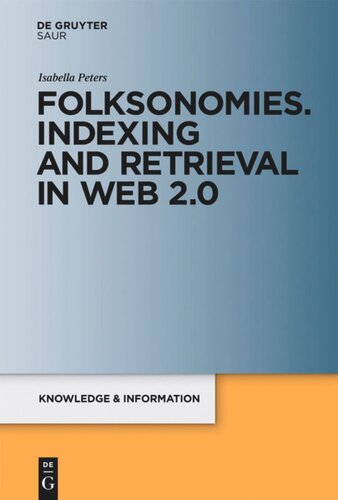

Most ebook files are in PDF format, so you can easily read them using various software such as Foxit Reader or directly on the Google Chrome browser.
Some ebook files are released by publishers in other formats such as .awz, .mobi, .epub, .fb2, etc. You may need to install specific software to read these formats on mobile/PC, such as Calibre.
Please read the tutorial at this link: https://ebookbell.com/faq
We offer FREE conversion to the popular formats you request; however, this may take some time. Therefore, right after payment, please email us, and we will try to provide the service as quickly as possible.
For some exceptional file formats or broken links (if any), please refrain from opening any disputes. Instead, email us first, and we will try to assist within a maximum of 6 hours.
EbookBell Team

4.3
38 reviewsIn Web 2.0 users not only make heavy use of Col-laborative Information Services in order to create, publish and share digital information resources - what is more, they index and represent these re-sources via own keywords, so-called tags. The sum of this user-generated metadata of a Collaborative Information Service is also called Folksonomy. In contrast to professionally created and highly struc-tured metadata, e.g. subject headings, thesauri, clas-sification systems or ontologies, which are applied in libraries, corporate information architectures or commercial databases and which were developed according to defined standards, tags can be freely chosen by users and attached to any information resource. As one type of metadata Folksonomies provide access to information resources and serve users as retrieval tool in order to retrieve own re-sources as well as to find data of other users.
The book delivers insights into typical applications of Folksonomies, especially within Collaborative Information Services, and discusses the strengths and weaknesses of Folksonomies as tools of knowl-edge representation and information retrieval. More-over, it aims at providing conceptual considerations for solving problems of Folksonomies and presents how established methods of knowledge representa-tion and models of information retrieval can successfully be transferred to them.